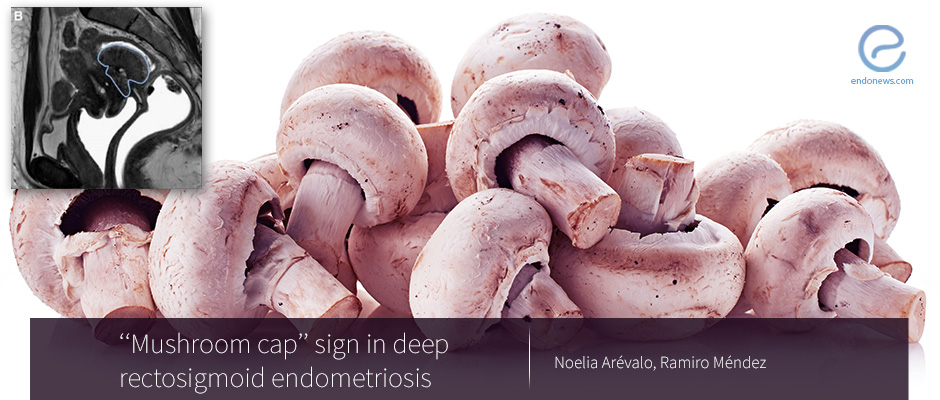Using the "Mushroom Cap" sign to describe endometriotic masses
Apr 18, 2018
A mushroom in my belly!
Key Points
Highlights:
- Deep pelvic endometriosis can invade, and implant onto the rectosigmoid wall. Deep endometriotic lesions can form a characteristic "mushroom cap" sign on T2-weighted MR images.
Key Results:
- Endometriotic lesions appear as T2-hypointensive solid irregular masses or soft tissue thickening on MRI.
- Lesions that affect the rectosigmoid wall can appear as a "mushroom cap", low signal intensity mass; this finding represents nodular thickening and fibrotic changes with seldom smooth muscle proliferation.
- The topmost portion of the "cap" appears as a linear hyperintensity, representing a displaced or thickened mucosa and submucosal layers of the colon.
- The diagnosis of endometriosis is facilitated by the presence of a high signal foci both on T2 and T1-weighted MR images.
What's done here:
- Radiologists describe a radiologic finding that represents endometriosis involving the rectosigmoid colon on MRI.
Limitations:
- This is a descriptive, and thus a subjective study using a small number of images to describe endometriotic masses.
- Appearances may be subjective for individuals, but certainly should be evaluated and applied for appropriate diagnosis.
Lay Summary
Endometriosis is a disease whereby ectopic endometrial cells attach and grow outside of the uterus.
A number of imaging techniques have been used to evaluate and assess endometriotic lesions. Magnetic resonance imaging (MRI) is a type of imaging modality used to assess tissues and can be used to evaluate and locate endometriotic lesions. Doctors Arevalo and Mendez at the University Hospital of San Carlos, Madrid, Spain recently published a paper in Abdominal Radiology describing and detailing what they see on MRI when assessing deep pelvic lesions in patients with endometriosis.
Deep pelvic endometriotic lesions most commonly affect the area between the rectum and vagina. In doing so, these lesions contribute to infertility and pelvic pain. MRI has been used to assess the adjacent tissues and organs that can be involved in patients with endometriosis.
The "mushroom cap" sign described in this article is seen when endometriosis involves the rectosigmoid colon. Implants generally affect the outermost layer of connective tissue, also known as serosa, but can infiltrate deeper and affect the muscular layers of the colon. If this occurs, cellular changes cause the endometriotic cells to become nodular and thicker, causing a mass to form. This endometriotic mass is seen on MRI as a low intensity (dark gray or black) area with a hyperintense (bright or white) "cap". Both the dark-colored mass and bright colored "cap" of the lesion are the components that make up the so-called mushroom cap sign.
Research Source: https://www.ncbi.nlm.nih.gov/pubmed/29619523
endometriosis rectosigmoid MRI imaging mushroom infertility

